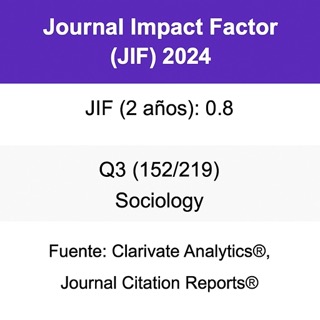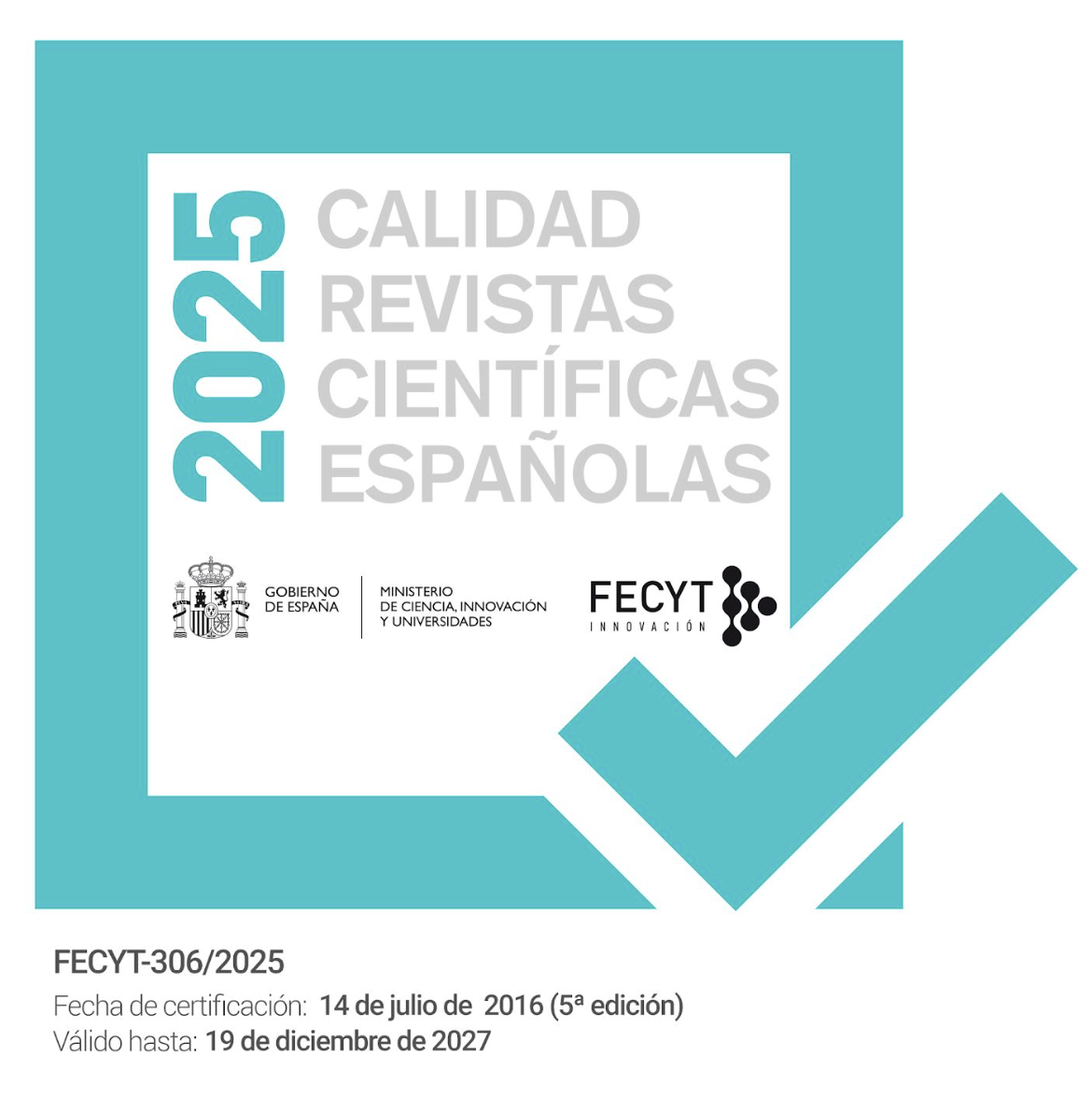¿Reproducción o movilidad cultural? Un estudio a partir de distintas dimensiones del capital cultural
DOI:
https://doi.org/10.22325/fes/res.2022.123Palabras clave:
Capital cultural, reproducción cultural, movilidad cultural, regresión de efectos fijos, PISAResumen
La teoría de la reproducción cultural planteada por Bourdieu y Passeron establece que el sistema educativo contribuye a la reproducción de las estructuras sociales a través de su papel en la reproducción de la estructura de capital cultural. No obstante, no existe consenso sobre cómo se transforma el capital cultural en una ventaja educativa o sobre qué alumnos obtienen una mayor rentabilidad del capital cultural, si los de extracción social alta (modelo de reproducción cultural) o baja (modelo de movilidad cultural). En el presente trabajo se emplea información de PISA 2000 sobre el caso español para operacionalizar distintas dimensiones del capital cultural y poner a prueba su productividad para alumnos de diferente extracción social. Los resultados avalan el modelo de reproducción cultural para todos los indicadores de capital cultural, lo que significa que los alumnos de extracción social alta no solo disponen de más capital cultural, sino que obtienen una mayor rentabilidad de cada unidad de capital cultural.
Citas
Abadie, A., Athey, S., Imbens, G. W., & Wooldridge, J. (2017). When Should You Adjust Standard Errors for Clustering? (Issue 24003). National Bureau of Economic Research. https://doi.org/10.3386/w24003
Allison, P. D. (2009). Fixed Effects Regression models. Sage Publications.
Althusser, L. (2014). Ideology and ideological state apparatuses (notes towards an investigation). En On the reproduction of capitalism (pp. 232-272). Verso.
Andersen, I. G., & Jæger, M. M. (2015). Cultural capital in context: Heterogeneous returns to cultural capital across schooling environments. Social Science Research, 50, 177-188. https://doi.org/10.1016/j.ssresearch.2014.11.015
Aschaffenburg, K., & Maas, I. (1997). Cultural and educational careers: The dynamics of social reproduction. American Sociological Review, 62(4), 573-587. https://doi.org/10.2307/2657427
Barone, C. (2006). Cultural capital, ambition and the explanation of inequalities in learning outcomes: A comparative analysis. Sociology, 40(6), 1039-1058. https://doi.org/10.1177/0038038506069843
Baudelot, C., y Establet, R. (1976). La escuela capitalista en Francia. Siglo XXI de España.
Bell, D. (1972). On meritocracy and equality. On Meritocracy and Equality, 29, 29-68.
Bernstein, B. (1981). Codes, modalities, and the process of cultural reproduction: A model. Language in Society, 10(3), 327-363. https://doi.org/10.1017/S0047404500008836
Blaabæk, E. H. (2020). Reading when the sun does not shine: The effect of reading on children’s academic performance. Research in Social Stratification and Mobility, 67. https://doi.org/10.1016/j.rssm.2020.100485
Blaskó, Z. (2003). Cultural Reproduction or Cultural Mobility? Review of Sociology, 9(1), 5-26. https://doi.org/10.1556/revsoc.9.2003.1.1
Blau, P. M., y Duncan, O. D. (1967). The American occupational structure. John Wiley & Sons.
Bodovski, K. (2010). Parental practices and educational achievement: Social class, race, and habitus. British Journal of Sociology of Education, 31(2), 139-156. https://doi.org/10.1080/01425690903539024
Boone, S., & Van Houtte, M. (2013). In search of the mechanisms conducive to class differentials in educational choice: A mixed method research. Sociological Review, 61(3), 549-572. https://doi.org/10.1111/1467-954X.12031
Bourdieu, P. (1973). Cultural reproduction and social reproduction. En R. Brown (Ed.), Knowledge, Education and Cultural Change (pp. 56-68). Taylor & Francis.
Bourdieu, P. (1979). La distinción. Criterio y bases sociales del gusto. Taurus.
Bourdieu, P. (1986). The forms of capital. En J. Richardson (Ed.), Handbook of theory and research for the Sociology of Education Sociology of Education (pp. 241-258). Greenwood.
Bourdieu, P., y Passeron, J. C. (1970). La Reproducción: Elementos para una teoría del sistema de enseñanza. Fontamara.
Bowles, S., y Gintis, H. (1985). La instrucción escolar en la América capitalista: La reforma educativa y las contradicciones de la vida económica. Siglo XXI de España.
Breinholt, A., & Jæger, M. M. (2020). How does cultural capital affect educational performance: Signals or skills? British Journal of Sociology, 71(1), 28-46. https://doi.org/10.1111/1468-4446.12711
Caliendo, M., & Kopeinig, S. (2008). Some practical guidance for the implementation of Propensity Score Matching. Journal of Economic Surveys, 22(1), 31-72. https://doi.org/10.1111/j.1467-6419.2007.00527.x
Cincinnato, S., De Wever, B., Van Keer, H., & Valcke, M. (2016). The Influence of Social Background on Participation in Adult Education: Applying the Cultural Capital Framework. Adult Education Quarterly, 66(2), 143-168. https://doi.org/10.1177/0741713615626714
De Graaf, N. D., De Graaf, P. M., & Kraaykamp, G. (2000). Parental cultural capital and educational attainment in the Netherlands: A refinement of the cultural capital perspective. Sociology of Education, 73(2), 92-111. https://doi.org/10.2307/2673239
De Graaf, N. D., & De Graaf, P. M. (2002). Formal and popular dimensions of cultural capital: Effects on children’s educational attainment. Netherlands Journal of Social Sciences, 38(2), 167-186.
DiMaggio, P. (1982). Cultural Capital and School Success: The Impact of Status Culture Participation on the Grades of U.S. High School Students. American Sociological Review, 47(2), 189-201. https://doi.org/10.2307/2094962
DiMaggio, P., & Mohr, J. (1985). Cultural Capital, Educational Attainment, and Marital Selection. American Journal of Sociology, 90(6), 1231-1261. https://doi.org/10.1086/228209
Dumais, S. A. (2006a). Early childhood cultural capital, parental habitus, and teachers’ perceptions. Poetics, 34(2), 83-107. https://doi.org/10.1016/j.poetic.2005.09.003
Dumais, S. A. (2006b). Elementary school students’ extracurricular activities: The effects of participation on achievement and teachers’ evaluations. Sociological Spectrum, 26(2), 117-147. https://doi.org/10.1080/02732170500444593
Erikson, R., Goldthorpe, J. H., & Portocarero, L. (1979). Intergenerational Class Mobility in Three Western European Societies: England, France and Sweden. The British Journal of Sociology, 30(4), 415-441. https://doi.org/10.2307/589632
Farkas, G., Grobe, R. P., Sheehan, D., & Shuan, Y. (1990). Cultural Resources and School Success: Gender, Ethnicity, and Poverty Groups within an Urban School District. American Sociological Review, 55(1), 127-142. https://doi.org/10.2307/2095708
Gaddis, S. M. (2013). The influence of habitus in the relationship between cultural capital and academic achievement. Social Science Research, 42(1), 1-13. https://doi.org/10.1016/j.ssresearch.2012.08.002
Jaeger, M. M. (2009). Equal Access but Unequal Outcomes: Cultural Capital and Educational Choice in a Meritocratic Society. Social Forces, 87(4), 1943-1971. https://doi.org/10.1353/sof.0.0192
Jæger, M. M., & Karlson, K. (2018). Cultural capital and educational inequality: A counterfactual analysis. Sociological Science, 5, 775-795. https://doi.org/10.15195/V5.A33
Jæger, M. M., & Møllegaard, S. (2017). Cultural capital, teacher bias, and educational success: New evidence from monozygotic twins. Social Science Research, 65, 130-144. https://doi.org/10.1016/j.ssresearch.2017.04.003
Jann, B. (2019). iscogen: Stata module to translate ISCO codes.
Jerrim, J., Lopez-Agudo, A., Marcenaro-Gutierrez, O. D., & Shure, N. (2017). To weight or not to weight?: The case of PISA data. En Investigaciones de Economía de la Educacíon Volumen 12 (pp. 285-302).
Lareau, A. (2003). Unequal Childhoods: Class, Race and Family Life. University of California Press.
Lareau, A., & Horvat, E. M. (1999). Moments of social inclusion and exclusion race, class, and cultural capital in family-school relationships. Sociology of Education, 72(1), 37-53. https://doi.org/10.2307/2673185
Lareau, A., & Weininger, E. B. (2003). Cultural capital in educational research: A critical assessment. Theory and Society, 32, 567-606. https://doi.org/10.1007/1-4020-2589-0_6
Maslauskaite, A. (2021). Cultural Capital, Gender and Intergenerational Educational Mobility in Post-Communist Space. Societies, 11(1). https://doi.org/10.3390/soc11010004
Mikus, K., Tieben, N., & Schober, P. S. (2020). Children’s conversion of cultural capital into educational success: The symbolic and skill-generating functions of cultural capital. British Journal of Sociology of Education, 41(2), 197-217. https://doi.org/10.1080/01425692.2019.1677454
Nash, R. (2005). Boudon, realism, and the cognitive habitus: Why an explanation of inequality / difference cannot be limited to a model of secondary effects. Interchange, 36(3), 275-293. https://doi.org/10.1007/s10780-005-6866-2
OECD. (2009). PISA Data Analysis Manual. 2nd Edition. OECD.
Parsons, T. (1971). The system of modern societies. Prentice-Hall.
Puzić, S., Gregurović, M., & Košutić, I. (2016). Cultural capital – a shift in perspective: An analysis of PISA 2009 data for Croatia. British Journal of Sociology of Education, 37(7), 1056-1076. https://doi.org/10.1080/01425692.2014.1001058
Puzić, S., Odak, I., & Šabić, J. (2019). Educational outcomes and aspirations of upper secondary school students: The cultural capital and relative risk aversion perspectives. Sociologija, 61(3), 368-388. https://doi.org/10.2298/SOC1903368P
Roksa, J., & Robinson, K. J. (2017). Cultural capital and habitus in context: The importance of high school college-going culture. British Journal of Sociology of Education, 38(8), 1230–1244. https://doi.org/10.1080/01425692.2016.1251301
Roscigno, V. J., & Ainsworth-Darnell, J. W. (1999). Race, cultural capital, and educational resources: Persistent inequalities and achievement returns. Sociology of Education, 72(3), 158-178. https://doi.org/10.2307/2673227
Rubin, D. B. (1987). Multiple Imputation for Nonresponse in Surveys. John Wiley & Sons.
Seghers, M., Boone, S., & Van Avermaet, P. (2019). Social class and educational decision-making in a choice-driven education system: A mixed-methods study. British Journal of Sociology of Education, 40(5), 696-714. https://doi.org/10.1080/01425692.2019.1581051
Sullivan, A. (2001). Cultural capital and educational attainment. Sociology, 35(4), 893-912. https://doi.org/10.1177/0038038501035004006
Sullivan, A. (2007). Cultural capital, cultural knowledge and ability. Sociological Research Online, 12(6), 1-14. https://doi.org/10.5153/sro.1596
Swidler, A. (1986). Culture in Action: Symbols and Strategies. American Sociological Review, 51(2), 273-286. https://doi.org/10.2307/2095521
Tramonte, L., & Willms, J. D. (2010). Cultural capital and its effects on education outcomes. Economics of Education Review, 29(2), 200-213. https://doi.org/10.1016/j.econedurev.2009.06.003
Treiman, D. J. (1970). Industrialization and social stratification. Sociological Inquiry, 40(2), 207-234. https://doi.org/10.1111/j.1475-682X.1970.tb01009.x
Xie, C., & Ma, Y. (2019). The mediating role of cultural capital in the relationship between socioeconomic status and student achievement in 14 economies. British Educational Research Journal, 45(4), 838–855. https://doi.org/10.1002/berj.3528
Xu, J., & Hampden-Thompson, G. (2012). Cultural Reproduction, Cultural Mobility, Cultural Resources or Trivial Effect? A Comparative Approach to Cultural Capital and Educational Performance. Comparative Education Review, 56(1), 98-124. https://doi.org/10.1086/661289
Publicado
Cómo citar
Número
Sección
Licencia
Derechos de autor 2022 Manuel T. Valdés

Esta obra está bajo una licencia internacional Creative Commons Atribución-NoComercial 4.0.
Todas las publicaciones de la Revista Española de Sociología se realizarán bajo una licencia abierta Creative Commons de Reconocimiento 4.0 Internacional (CC BY 4.0). Dicha licencia establece que los autores son los poseedores de los derechos de propiedad intelectual de sus trabajos, que pueden redistribuirse a cambio de un reconocimiento adecuado. Para más información de la licencia Creative Commons, consultar aquí.
Una vez aceptado un artículo para su publicación, la Revista Española de Sociología solicitará al denominado "autor para la correspondencia" la aceptación de una licencia obligatoria Creative Commons incluida en un acuerdo o contrato de publicación.



